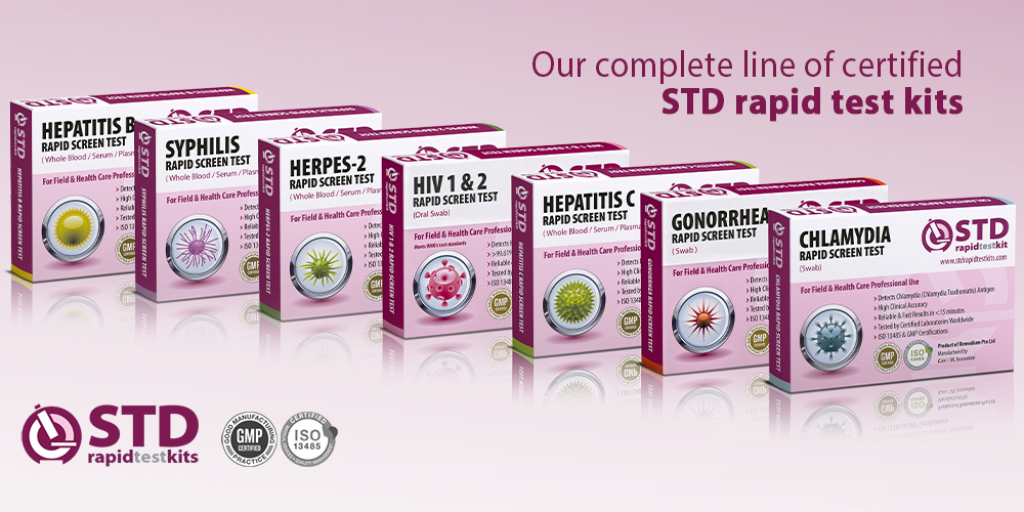Quick Answer: White spots on your throat without a fever are often mistaken for strep, but can be caused by mono, tonsillitis, or other viral infections. Doctors often check your lymph nodes and spleen before confirming it’s strep.
This Isn’t Just a Cold, and It’s Not Always Strep Either
“I kept telling them, 'It’s gotta be strep.' I had the white patches, the soreness, all of it,” Melissa recalls. But no fever. No swollen glands. No bad breath, the usual hallmarks of bacterial strep infection weren’t showing up. “They ran the rapid strep, then a throat culture. Both came back clean.”
Doctors typically check for one thing first: the presence of fever. Strep throat, caused by Group A Streptococcus bacteria, usually presents with a sudden onset sore throat, high fever, swollen tonsils, and pain when swallowing. But when there's no fever, no rapid deterioration, and the pain lingers over days, not hours, that’s when they start to suspect something else.
Mononucleosis, caused by the Epstein-Barr virus, often masquerades as strep. A 2024 study in the Journal of Infectious Diseases found that 24% of mono cases are misdiagnosed as strep in the first 72 hours. That delay matters. Mono can linger for weeks, cause fatigue, and in rare cases, enlarge the spleen, making physical activity risky and recovery much longer than expected.
Here’s where things get trickier: Mono doesn’t always bring fever. In younger adults especially, it might show up with white patches in the throat, a bit of fatigue, and that’s it. No full immune overdrive. So if your sore throat won’t go away and the antibiotics aren’t helping, you may be treating the wrong infection entirely.
“I Thought I Had Strep, Turns Out, It Was Mono From Oral”
Ty, 26, had a similar experience, but with a twist. “I was hooking up casually with someone I met at a bar, just kissing and oral. A few days later, my throat blew up. I didn’t feel sick-sick, just tired. My tonsils looked like cottage cheese.”
He assumed it was strep and went in for a test. “They said I didn’t have strep. The nurse actually asked if I’d ever had mono. I hadn’t. They ran a mono test and, boom, it came back positive.”
Mono spreads through saliva, which makes it easy to pass through deep kissing or oral sex. But unlike strep, it has a longer incubation period, up to six weeks in some cases. “You might not even know who you got it from,” Ty says. “That freaked me out more than the symptoms.”
This confusion is common, especially in younger adults. While most people associate mono with kissing, the virus can also be passed through shared drinks, toothbrushes, or any deep mouth-to-mouth contact. And it can live dormant in your system for years, meaning someone can carry it without showing symptoms and still pass it to you.
It’s not shameful. It’s viral reality. Mono isn't an STD in the clinical sense, but it lives in the same sexual and social overlaps, just like oral herpes or HPV.

People are also reading: Making STD Clinics Disability-Friendly: The Key to Inclusive Sexual Health Care
Why “Negative Strep Test” Doesn’t Mean You're Fine
Here's where the data hits hard: According to the CDC, rapid strep tests miss up to 10% of true positives. That means you could be told you don’t have strep... when you actually do. But more commonly, people are misdiagnosed with strep and given antibiotics for a viral infection like mono, where antibiotics do nothing and could even cause a rash.
That happened to Jordan, 31. “They put me on amoxicillin. Three days later, I broke out in a full-body rash, like red blotches everywhere. That’s when the doctor said it was likely mono, not strep, and I should’ve never taken antibiotics.” This isn’t rare. A 2023 analysis in BMJ Case Reports highlighted that 85% of people with mono who are incorrectly treated with amoxicillin or ampicillin develop a distinct rash.
The body knows when something isn’t right, even if the tests don’t. If your throat pain is intense, your spots are visible, and strep tests keep coming back negative, it’s time to ask about mono. Especially if you’re dealing with:
– White patches on your tonsils or throat
– Fatigue that creeps in and lingers
– Mild swelling in your neck or under your jaw
– A negative rapid strep or no fever after multiple days
None of these symptoms confirm mono, but they’re a red flag for your provider to go beyond the quick swab and actually test your blood or palpate your spleen.
When you only treat what’s common, you miss what’s real. Mono is inconvenient, yes, but untreated, it can be downright debilitating.
Check Your STD Status in Minutes
Test at Home with Remedium7-in-1 STD Test Kit

 For Men & Women
For Men & Women Results in Minutes
Results in Minutes No Lab Needed
No Lab Needed Private & Discreet
Private & DiscreetOrder Now $129.00 $343.00
For all 7 tests
It’s Not “Just Kissing Disease”, And It’s Not Just Teenagers
Somewhere along the line, mono got labeled “the kissing disease,” like a high school rite of passage. But that framing does more harm than good. It trivializes the impact. It hides the emotional toll. And it totally ignores how mono shows up in adults well beyond high school.
“I felt silly even asking for a mono test,” says Andrea, 34. “It sounded like something you’d catch at prom, not in your thirties. But I’d been seeing someone new, we had a ton of oral sex, and then I just... crashed. White spots. Swollen throat. Bone-tired. I thought I had long COVID.”
We don’t talk enough about how mono shows up in adults. Yes, the virus is most often contracted young, but the CDC reports that many people experience their first real mono symptoms between ages 20 and 40, especially if they avoided earlier childhood exposure. EBV isn’t a one-time visitor. It can reactivate during stress, after other illnesses, or during new sexual relationships. Sound familiar?
And the shame of asking about it, the giggles, the dismissive “aren’t you too old for mono?” tone, keeps people from advocating for themselves. From getting tested. From naming what’s happening to their body.
This is not immaturity. This is immunology.
The stigma around mono echoes the same patterns we see with oral herpes or thrush: if it touches the mouth and involves sex, people shut down. That stops here. Mono deserves real language, real medical attention, and zero eye rolls.
The One Thing Doctors Feel For First: Lymph Nodes and the Spleen
Doctors don’t just rely on swabs. When you come in with throat symptoms and visible white spots, they often go straight for your neck, feeling for enlarged lymph nodes under the jaw, behind the ears, and along your throat.
If they’re tender and swollen, that suggests a systemic immune response, often viral. Then comes the spleen check. Mono frequently causes **splenomegaly** (an enlarged spleen), which isn’t visible but can be felt just beneath the ribcage. It’s subtle, but life-saving: a swollen spleen can rupture if ignored. That’s why physical exam matters just as much as the test results.
“My doctor pressed right under my left ribs and said, ‘Yeah, I think you’ve got mono,’” says Ty. “I didn’t even know you could feel that.”
They’ll likely follow up with a blood test called a **monospot**, or more accurately, a complete blood count (CBC) to look for **atypical lymphocytes**, the immune cells that spike when mono is in play. This is when things become clear. When you finally stop spiraling in symptom limbo.
Ready for Answers? Testing Doesn’t Have to Be Complicated
If you’re stuck in a loop, sore throat, white patches, fatigue, but no fever, it’s time to get clarity. And that doesn’t always require a clinic visit. Home test kits can now help screen for overlapping infections and rule out STDs that sometimes mimic throat infections, especially if you've had recent oral sex.
Because let’s be honest, when we Google “sore throat white spots no fever,” we’re not just thinking strep. We’re thinking herpes. We’re thinking gonorrhea of the throat. We’re thinking “what if I gave it to someone else?” And we’re not wrong to think that. Sex lives and health lives aren’t separate tracks, they’re intertwined.
Peace of mind is one test away. This combo home STD test kit checks for multiple infections from one sample, with quick results and full privacy. Whether your symptoms are mono, strep, or something else, knowing what you're dealing with is the first step to healing.

People are also reading: How Rapid STD Testing is Transforming Public Health and Accessibility
The Truth About White Spots: Not Always a Warning Sign
Here’s a myth worth busting wide open: white spots on the tonsils don’t always mean infection. Tonsil stones (aka **tonsilloliths**) can look similar, little white or yellow chunks that form in the crevices of your tonsils and are made up of food, bacteria, and dead cells. They don’t always hurt. They don’t always smell. But they can be mistaken for strep or mono at first glance.
Some people chronically develop them, especially after oral sex or deep kissing, which disrupts the oral microbiome. Others only notice them when they dislodge during brushing or coughing. If your rapid strep and mono tests are both negative, and you’re not experiencing fatigue or swollen nodes, this might be the explanation.
But here’s the key difference: tonsil stones don’t usually cause a sore throat for days. They’re a benign nuisance, not a red flag. Mono and strep, on the other hand, both inflame the throat in deep, painful ways, and that’s what should drive you to get checked.
Trying to self-diagnose based on throat visuals alone is like reading tea leaves. Helpful clues, but not the whole picture.
FAQs
1. Is it possible to have strep throat without a fever?
Yes. Fever is a common sign of strep, but not everyone, especially adults, will have a high temperature. You may still have other symptoms, such as a sore throat, white spots, and swollen tonsils.
2. Are white spots on the throat always strep?
No. White spots can be caused by mono, tonsil stones, oral thrush, or even gonorrhea of the throat. A strep test is necessary to confirm bacterial infection.
3. Is it possible for mono to happen without a fever?
Of course. Many adults with mono don't have a fever. You might still feel tired, have a sore throat, white patches, and swollen glands.
4. How do doctors find out if someone has mono?
Doctors usually do a physical exam of the lymph nodes and spleen, as well as a monospot blood test or a full blood panel, to find out if there are too many white blood cells and lymphocytes that aren't normal.
5. Can you get mono from having oral sex?
Yes. You can get mono from kissing or having oral sex because it spreads through saliva. It doesn't cause STDs, but it does live in places where people have sex.
6. Why did my strep test come back negative when I'm still sick?
Rapid strep tests can give false negatives. You might need a throat culture or more tests, like a monospot, if your symptoms don't go away.
7. Is mono harmful?
It isn't usually dangerous, but if you don't treat it or don't manage it well, it can cause serious problems like an enlarged spleen, long-lasting fatigue, and liver inflammation.
8. How long does mono last?
Most symptoms get worse in the first two weeks, but tiredness and weakness can last for a month or more. Everyone's recovery is different.
9. Can you test yourself for mono or STDs at home?
Yes. You can use home test kits to check for common STDs and rule out infections that are similar to them. Some kits may look for the Epstein-Barr virus, while others may only look for STDs that are passed on through oral sex.
10. If I test positive for mono, should I tell my partners?
Yes, especially if you kissed or touched them with your mouth recently. It's not something to be ashamed of; it's a sign of respect and care.
You Deserve Answers, Not Assumptions
Your sore throat isn’t “just allergies.” Your exhaustion isn’t “just in your head.” And those white spots that keep showing up when strep tests say negative? They’re your body asking for a better explanation.
Whether it’s mono, strep, tonsil stones, or something else entirely, you deserve more than guesswork. Testing is care. Talking about it is courage. And healing starts with clarity.
Don’t wait and wonder, get the clarity you deserve. This at-home combo test kit checks for the most common STDs discreetly and quickly.
Sources
1. CDC – Testing for Strep Throat or Scarlet Fever
2. PubMed – Mono and Strep Can Coincide; Antibiotics Often Unwarranted
3. American Family Physician – Diagnosing Infectious Mononucleosis
4. StatPearls – Mononucleosis: Cause, Symptoms, and Transmission










